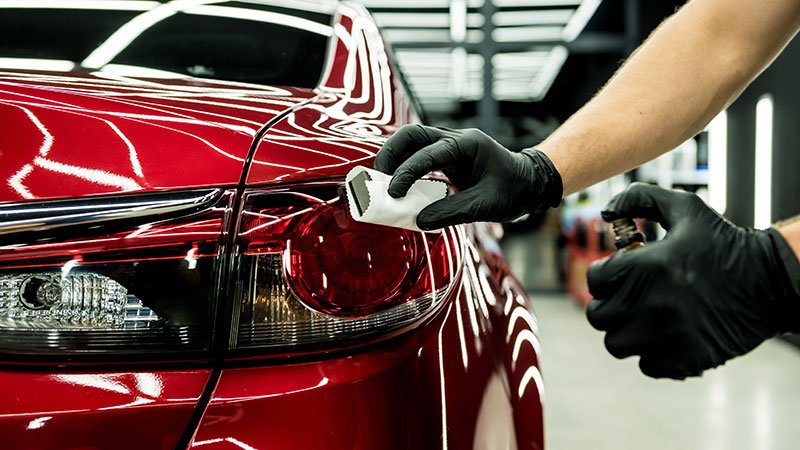Professional Ceramic Coatings San Jose for Superior Gloss and Durability
Professional Ceramic Coatings San Jose for Superior Gloss and Durability
Blog Article
Introducing the Scientific Research Behind Ceramic Coatings: How Does It Work and Why Is It Above Typical Choices?
Ceramic coatings have actually been gaining popularity in different markets for their phenomenal performance and sturdiness. The scientific research behind these finishes exceeds plain surface defense, delving right into the intricate chemistry that makes them stick out from standard choices (ceramic coatings san jose). Understanding exactly how ceramic coverings work and why they outperform standard alternatives is crucial for those seeking to boost the longevity and resilience of their materials. What exactly establishes ceramic layers apart, and exactly how do they accomplish such amazing outcomes?
The Chemistry of Ceramic Coatings
In comprehending ceramic finishes, diving right into the intricate chemistry behind their structure is important for comprehending their functionality and toughness. Ceramic layers are primarily made up of silicon dioxide (SiO2), which forms a strong and safety layer when applied to various surface areas. This chemical framework offers phenomenal resistance to warm, chemicals, and deterioration, making ceramic finishings highly looked for after for a wide range of applications.
The chemistry behind ceramic coverings entails the formation of covalent bonds between silicon and oxygen atoms, producing a rigid network that enhances the layer's toughness and durability. Furthermore, the presence of other aspects such as titanium, zirconium, and light weight aluminum more enhances the finishing's homes, using boosted solidity and adhesion to surfaces.
Understanding the chemical make-up of ceramic layers enables the modification of formulations to fit certain demands, whether it be for automotive, commercial, or household objectives. By using the power of chemistry, ceramic coverings continue to lead the way for remarkable defense and performance in various markets.
Benefits of Ceramic Coatings

As a result, ceramic finishes make cleansing and keeping surface areas a lot simpler and less time-consuming. Generally, the wide range of advantages provided by ceramic finishings make them a premium choice contrasted to traditional finishing approaches.
Exactly How Ceramic Coatings Bond
Ceramic finishes bond to surface areas with a process that includes molecular attachment and chemical communications. When a ceramic coating is related to a surface, it creates a strong bond by chemically sticking to the surface at a molecular degree. This bond is produced via the development of covalent bonds, which are very solid and resilient. The ceramic coating's molecules penetrate the pores of the surface area, producing a limited grip that withstands splitting up.
In addition, the chemical interactions in between the ceramic coating and the surface area further boost the bond. ceramic coatings san jose. These communications allow the ceramic layer to develop a smooth and continuous layer on the surface area, providing excellent protection and toughness. Unlike conventional coatings that may rest on the surface area without totally bonding, ceramic coatings develop an irreversible bond that is resistant to chemicals, UV rays, and severe environmental problems

Fundamentally, the bonding mechanism of ceramic layers makes sure a resilient and efficient safety layer that outshines traditional finish options. This exceptional bond adds to the toughness, scrape resistance, and durability of ceramic coverings, making them a preferred selection for different applications.
Toughness of Ceramic Coatings
The exceptional durability of ceramic coatings stems from their robust molecular attachment and chemical communications with surfaces, making certain a long lasting protective layer that exceeds traditional finishing alternatives. When used, ceramic finishes form a strong bond with the substratum, producing a resistant obstacle against different environmental stressors such as UV radiation, chemicals, and abrasions. This bond is so protected that it can stand up to the roughness of everyday use without degrading or weakening description promptly.
Unlike conventional coatings that might deteriorate over time, ceramic coverings maintain their honesty for a prolonged duration, giving long-lasting protection for the underlying surface. In general, the outstanding resilience of ceramic layers makes them a superior option for shielding a vast range of surface areas blog in various applications.
Ceramic Coatings Vs. Conventional Options
In comparison to standard coating approaches, ceramic finishings supply a distinctive blend of resilience and protective abilities that set them apart in numerous surface protection applications. Conventional choices such as wax or sealants provide a momentary layer of security that can wear away swiftly, calling for constant reapplication. On the various other hand, ceramic coverings form a solid bond with the surface, producing a semi-permanent or long-term barrier that is very resistant to abrasion, chemicals, UV rays, and severe temperature levels.
Moreover, ceramic finishes use remarkable hydrophobic buildings contrasted to traditional finishes. The hydrophobic nature of ceramic layers triggers water to bead up and roll off the surface area, lugging dust and impurities with it. This self-cleaning result assists to maintain the surface's sanitation and gloss for extensive durations, minimizing the requirement for constant maintenance.
In addition, ceramic coverings have a thicker layer contrasted to standard alternatives, giving improved scratch resistance and protection versus minor impacts. This durability makes sure resilient efficiency and helps preserve the aesthetic appeal of the treated surface area for a prolonged period.
Final Thought
To conclude, the scientific research behind ceramic coatings lies in their chemical make-up and bonding properties, making them superior to conventional alternatives. The advantages of ceramic finishes include raised longevity and security for surfaces. By recognizing exactly how ceramic coatings job and their benefits over traditional alternatives, one can make educated choices when considering finish options for various applications.
Unlike conventional coatings that may sit on the surface area without totally bonding, ceramic layers produce a permanent bond that is immune to chemicals, UV rays, and extreme environmental conditions.
The outstanding long life of ceramic layers stems from their robust molecular adhesion Full Report and chemical communications with surfaces, making sure a durable protective layer that surpasses standard layer options.Unlike conventional coverings that might deteriorate over time, ceramic layers keep their honesty for a prolonged period, providing long-lasting security for the underlying surface.In contrast to standard layer techniques, ceramic coatings supply a distinctive blend of toughness and safety capacities that establish them apart in various surface security applications. By recognizing just how ceramic layers work and their advantages over traditional choices, one can make educated choices when taking into consideration layer options for various applications.
Report this page